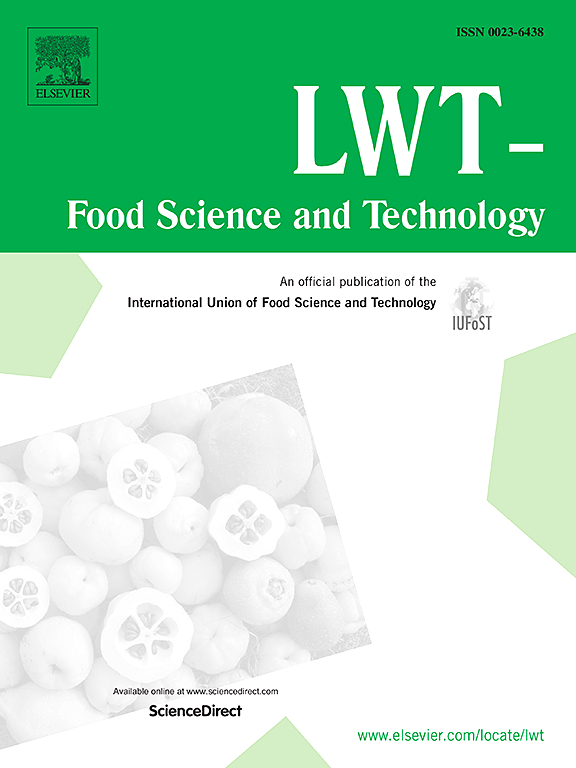Analysis on the ice growth in 3D-printed meat during freezing process
IF 6
1区 农林科学
Q1 FOOD SCIENCE & TECHNOLOGY
引用次数: 0
Abstract
In this study, a low-fat 3D printed meat was designed and prepared, and its printing formability and postprinting stability were evaluated via rheological and specific measurements. The freezing behaviour of samples with different physical size at different freezing temperatures (including superchilling treatment) was investigated through the macroscopic freezing process. The quantity and size of ice crystals under different freezing rates were dynamically captured by microscopic observation, and fitting equations were obtained by further combining the data via macro- and microscopic ice quantification methods. The quality characteristics of chicken breast, commercially available plant-based chicken breast and 3D printed meat based on chicken breast and walnut protein (CBWP) before and after freezing in different environments were compared via ice crystal quantization technology. It was found that the water-holding capacity of 3D-printed meat CBWP after superchilling treatment exhibited better than other freezing groups, indicating the possibility of using superchilling treatment technology as a preservation method for 3D-printed meat.
求助全文
约1分钟内获得全文
求助全文
来源期刊

LWT - Food Science and Technology
工程技术-食品科技
CiteScore
11.80
自引率
6.70%
发文量
1724
审稿时长
65 days
期刊介绍:
LWT - Food Science and Technology is an international journal that publishes innovative papers in the fields of food chemistry, biochemistry, microbiology, technology and nutrition. The work described should be innovative either in the approach or in the methods used. The significance of the results either for the science community or for the food industry must also be specified. Contributions written in English are welcomed in the form of review articles, short reviews, research papers, and research notes. Papers featuring animal trials and cell cultures are outside the scope of the journal and will not be considered for publication.
 求助内容:
求助内容: 应助结果提醒方式:
应助结果提醒方式:


